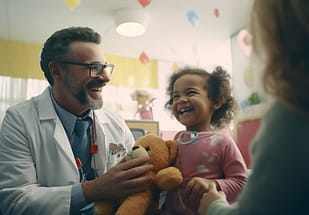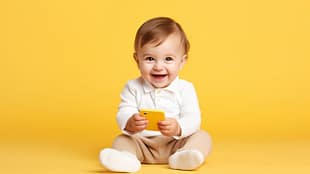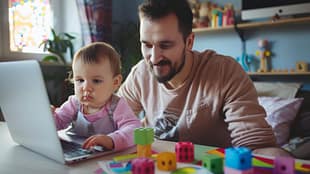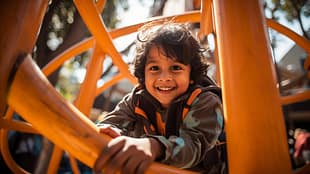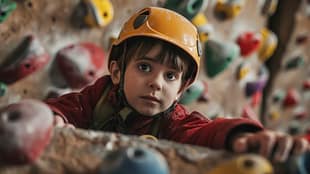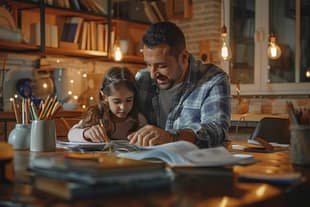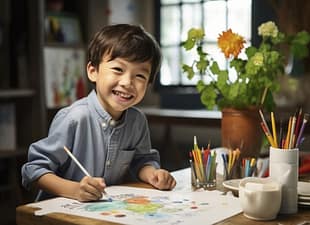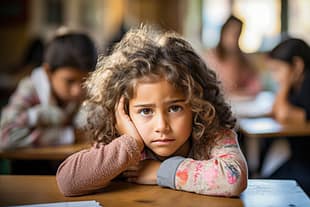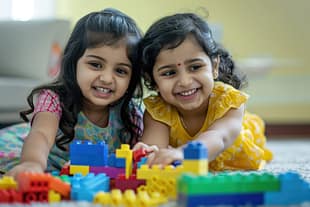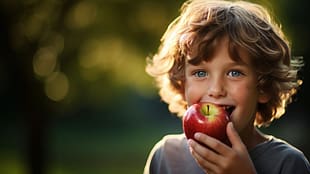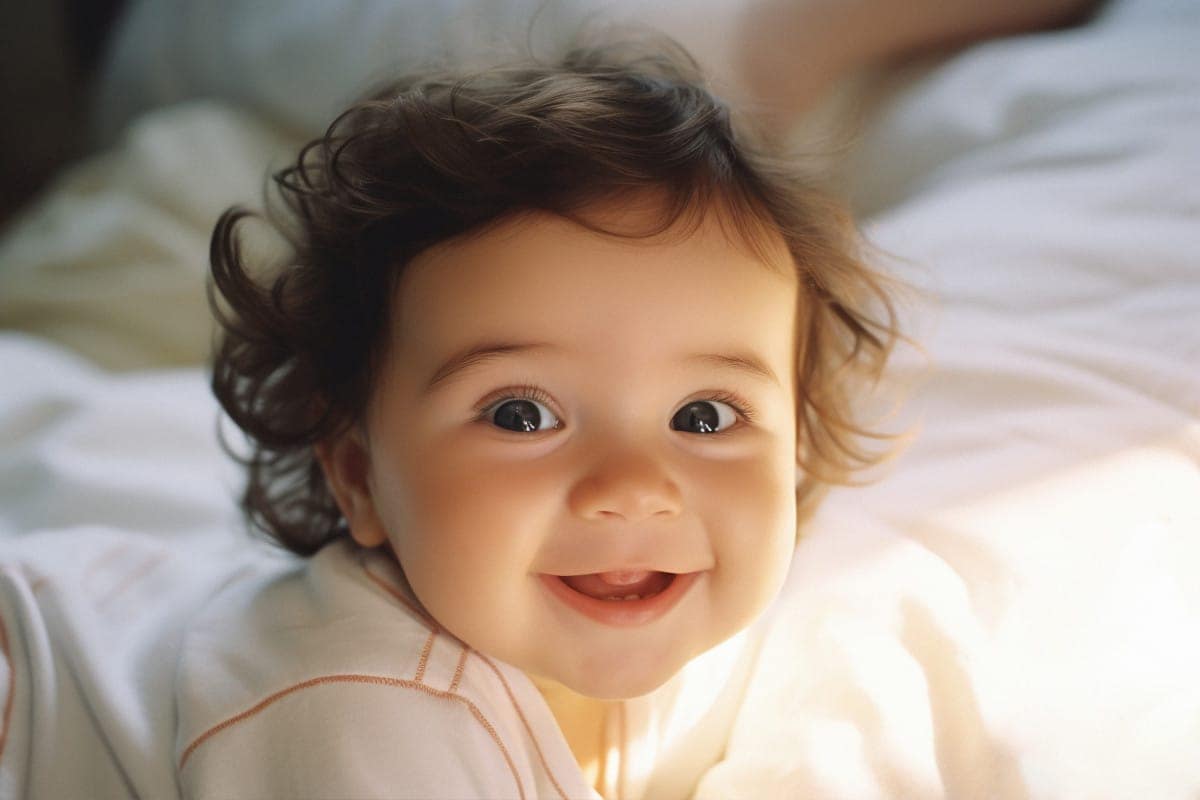
2 Months
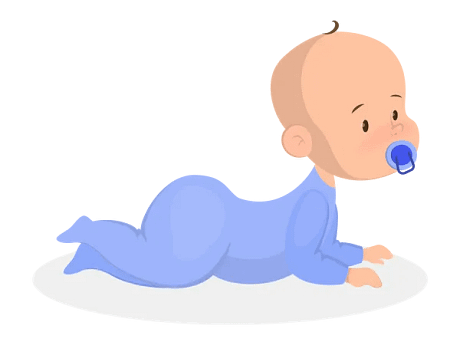
Language and Communication Milestones:
- Makes special cooing sounds.
- Turns their head towards sounds.
Cognitive Milestones (Learning, Thinking, Problem-Solving):
- Pays attention to faces.
- Eyes begin to follow moving objects.
- Recognizes people from a distance.
- Shows boredom through actions, like fussing or crying.
Movement and Physical Development Milestones:
- Holds head up when lying on their tummy and starts to push up.
- Moves arms and legs smoothly.
How to Support Your Baby’s Development:
- Help your baby soothe themselves; they may find comfort in sucking on their fingers.
- Begin establishing a routine, such as encouraging more sleep at night.
- Understanding your baby’s likes and dislikes will help you feel more confident and happy as a parent.
- Show excitement when your baby makes sounds.
- Encourage your baby to imitate sounds and use clear language when talking to them.
- Pay attention to your baby’s different cries to understand why they are crying in various situations.
- Talk to your baby, read to them, play games like peek-a-boo, and engage in playful activities.
- Place a safety mirror in your baby’s crib so they can look at themselves.
- Look at pictures with your baby and talk about them.
- Place toys near your baby when they wake up to encourage exploration.
- Encourage them to lift their head and look up at toys placed at eye level.
- Talk and sing to your baby regularly.
4 Months

Social and Emotional Milestones:
- Smiles spontaneously, especially at people.
- Shows some expressions, such as smiling or frowning.
- Enjoys playing with others and may cry when playtime stops.
Language and Communication Milestones:
- Imitates sounds they hear.
- Cries in different ways to express hunger, pain, or tiredness.
Cognitive Milestones (Learning, Thinking, Problem-Solving):
- Can tell if you are happy or sad.
- Responds to affection.
- Uses hands and eyes together.
- Tries to reach for toys when they see them.
- Follows moving objects with their eyes from side to side.
- Closely watches faces.
- Recognizes familiar people and objects at a distance.
Movement and Physical Development Milestones:
- Holds head steady without support when placed on a firm surface.
- Rolls over from tummy to back.
- Grasps a toy and plays with dangling toys.
- Brings hands to mouth.
- Pushes up on elbows when lying on their tummy.
How to Support Your Baby’s Development:
- Talk to your baby, smile, and express happiness.
- Establish regular routines for sleeping and feeding.
- Pay attention to your baby’s likes and dislikes.
- Try to understand how best to meet their needs.
- Imitate your baby’s sounds.
- Smile and show excitement when your baby makes noises.
- Find quiet time to read and cuddle with your baby.
- Provide age-appropriate toys such as rattles or colorful pictures to engage them.
- Play interactive games like peek-a-boo.
- Place toys nearby so your baby can reach or kick them.
- Give toys to your baby and help them learn to hold them.
- Provide safe opportunities for your baby to reach for toys and explore their environment.
6 Months
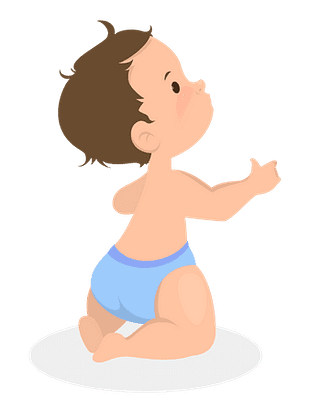
Social and Emotional Milestones:
- Recognizes familiar and unfamiliar people.
- Enjoys playing with others, especially parents.
- Responds to others’ emotions and is often happy.
- Enjoys looking at themselves in a mirror.
Language and Communication Milestones:
- Responds to sounds with vocalizations.
- Combines vowel sounds, and parents take turns “talking.”
- Responds to their name.
- Makes sounds to express joy and displeasure.
- Begins to use consonant sounds, such as “ma” and “ba.”
Cognitive Milestones (Learning, Thinking, Problem-Solving):
- Looks at objects nearby.
- Shows curiosity, such as trying to reach for objects.
- Brings objects to their mouth.
- Transfers objects from one hand to another.
Movement and Physical Development Milestones:
- Rolls over in both directions.
- When standing, supports weight on their legs and may bounce.
- Sits without support.
- Rocks back and forth while playing.
How to Support Your Baby’s Development:
- Play with your baby on the floor every day.
- Pay attention to your baby’s mood; comfort them if they are upset and continue if they are happy.
- Show your baby how to self-soothe (e.g., sucking their fingers).
- Imitate your baby’s smiles and sounds.
- Repeat your baby’s sounds and add simple words, such as “cat” if they say “ka.”
- Read books to your baby daily and engage them with the pictures.
- Talk to your baby about the things they are looking at.
- Play games like dropping toys and picking them up to teach cause and effect.
- Show colorful picture books to your baby.
- Point to objects and say their names.
- Show bright pictures in magazines and name them.
- Place toys nearby when your baby is lying down to encourage reaching.
9 Months
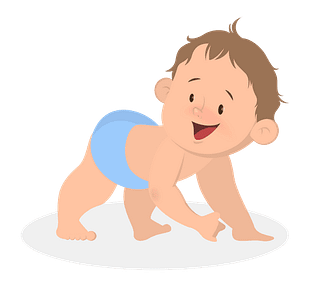
Social and Emotional Milestones:
- Shows fear of strangers.
- Prefers familiar people.
- Has favorite toys.
Language and Communication Milestones:
- Understands “no.”
- Makes different sounds, like “mama” and “ba.”
- Imitates others’ sounds and gestures.
Cognitive Milestones (Learning, Thinking, Problem-Solving):
- Watches where objects go when they fall.
- Looks for things they see you hide.
- Enjoys playing peek-a-boo.
- Easily transfers objects from one hand to another.
- Picks up small objects, like grains, using their thumb and index finger.
Movement and Physical Development Milestones:
- Can stand while holding onto something.
- Crawls.
- Can sit up independently.
- Pulls to stand from a sitting position while holding onto something.
How to Support Your Baby’s Development:
- Observe how your baby reacts to new situations and people; make them feel safe and comfortable.
- Stay close when your baby is exploring, so they know you’re nearby.
- Start simple routines and play games like “taking turns.”
- Talk about your baby’s emotions, for example, “You seem sad,” and try to comfort them.
- Describe what your baby is looking at, such as “red ball.”
- Imitate your baby’s sounds and words.
- Encourage positive behaviors, like saying “Let’s sit” instead of “Don’t stand.”
- Teach cause and effect by rolling balls, pushing toy cars, or dropping and picking up blocks.
- Read books and talk to your baby.
- Give your baby plenty of opportunities to explore in a safe environment.
1 yeAr

Social and Emotional Milestones:
- Shows shyness or fear of strangers.
- Cries when mom or dad leaves.
- Has favorite things and people.
- Brings a book to listen to a story when they want to hear one.
- Repeats sounds or actions to get attention.
- Offers a hand or leg to help with dressing.
- Plays games like peek-a-boo and pat-a-cake.
Language and Communication Milestones:
- Responds to simple words.
- Uses gestures such as nodding and waving “bye-bye” to make requests.
- Mimics speech with sounds, e.g., “wa” for water, “amma,” “achha,” “uppa.”
- Makes exclamation sounds, like “oh!”
- Tries to say the words you say.
Cognitive Milestones (Learning, Thinking, Problem-Solving):
- Explores objects in different ways, like shaking, hitting, or throwing.
- Easily finds hidden objects.
- Looks at the correct picture or object when its name is said.
- Imitates gestures.
- Puts and picks up objects in a container.
- Plays with two objects at once.
- Starts using objects correctly, like drinking from a cup or combing hair.
- Points with their index finger.
- Follows simple commands, like “pick up the toy.”
Movement and Physical Development Milestones:
- Can stand up without assistance.
- Walks while holding onto things.
- Walks a few steps without help and stands alone.
How to Support Your Baby’s Development:
- Give your child time to get comfortable with a new caregiver.
- Offer a favorite toy for comfort.
- Give your child a stuffed animal or blanket for comfort.
- Use a firm “no” for unwanted behaviors—don’t scold or give long explanations.
- Offer lots of hugs, kisses, and praise for good behavior.
- Focus more on encouraging good behaviors than punishing bad ones (aim for four times more encouragement).
- Talk to your child about what you’re doing. For example, “Mom is washing her hands with soap.”
- Read with your child every day, helping them remember pages and name pictures.
- Build on what your child says, tries to say, or points to. For example, if they point to a bus or say “bus,” say, “Yes, it’s a big blue bus.”
- Provide crayons and paper for your child to draw freely.
- Show them how to draw lines and praise them when they try to copy.
- Encourage play with blocks, shapes, and toys that develop hand coordination.
- Hide small toys and help your child find them.
- Ask your child to name body parts and objects you see.
- Sing action songs together.
- Provide bowls, boxes, or small musical instruments like a drum and encourage making noise.
- Ensure there are plenty of safe places for your child to explore.
- Secure tools, cleaning products, and dangerous items.
- Use safety gates to block off unsafe areas.
- Provide toys that can be pulled along.
18 months
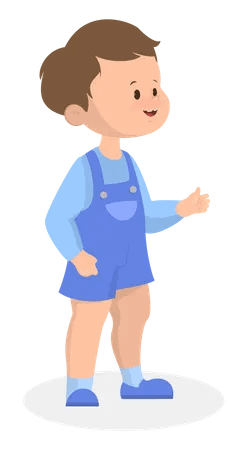
Social and Emotional Milestones:
- Likes to hand things to others playfully.
- May throw temper tantrums.
- Shows fear of strangers.
- Displays affection for familiar people.
- Engages in pretend play, like feeding a doll.
- Adapts to new caregivers and situations.
- Points to interesting things to show others.
- Explores new things independently but prefers to stay near parents.
Language and Communication Milestones:
- Says several single words.
- Shakes their head and says “no.”
- Points to indicate what they want.
Cognitive Milestones (Learning, Thinking, Problem-Solving):
- Recognizes common objects like a phone, brush, or spoon.
- Points to body parts.
- Shows interest in dolls and feeds them.
- Tries to get the attention of others.
- Scribbles on their own.
- Follows simple commands, like sitting down when told to.
Movement and Physical Development Milestones:
- Walks alone.
- Climbs stairs and starts running.
- Pulls toys while walking.
- Helps to undress themselves.
- Drinks from a cup.
- Eats with a spoon.
How to Support Your Baby’s Development:
- Provide a safe and loving environment with stability and predictability.
- Praise good behavior rather than punishing bad behavior.
- Label your child’s feelings, e.g., “When we read this book, you feel happy.”
- Encourage pretend play.
- Foster empathy by encouraging your child to comfort others, e.g., giving a hug to a sad friend.
- Read books with simple words and short sentences.
- Imitate your child’s words to encourage language development.
- Use words to describe feelings.
- Speak in simple and clear sentences.
- Ask simple questions to encourage conversation.
- Hide toys under blankets or pillows and help your child find them.
- Play with puzzles, books, and toys that teach cause and effect.
- Name pictures in books as you read together.
- Provide toys that encourage pretend play, such as dolls or toy phones.
- Allow your child safe spaces to walk and explore.
- Provide toys they can safely push or pull.
- Give them balls to kick, roll, or throw.
- Encourage your child to drink from a cup and use a spoon.
- Teach your child how to blow bubbles.
2 YEARS
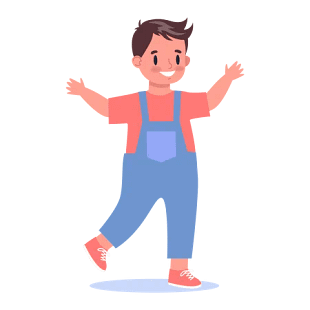
Social and Emotional Milestones:
- Imitates others, especially adults.
- Gets excited when around other children.
- Becomes more independent.
- Shows defiant behavior and often does the opposite of what is asked.
- Plays with other children and encourages them to join.
Language and Communication Milestones:
- Points to objects when they are named.
- Knows the names of familiar people and body parts.
- Forms simple sentences of two to four words.
- Repeats words overheard in conversations.
- Follows simple instructions.
- Points to objects in books when named.
Cognitive Milestones (Learning, Thinking, Problem-Solving):
- Finds objects even when hidden under two or three layers.
- Begins to recognize shapes and colors.
- Completes sentences and familiar songs from books.
- Engages in simple pretend play.
- Builds towers with four or more blocks.
- Shows a preference for using one hand over the other.
- Follows two-step instructions, such as “Pick up your shoes and put them in the box.”
- Names animals in picture books, such as cat, bird, and dog.
Movement and Physical Development Milestones:
- Stands on tiptoes.
- Kicks a ball and begins to run.
- Walks up and down stairs with assistance.
- Climbs onto and off furniture without help.
- Throws a ball overhand.
- Draws or copies straight lines and circles.
How to Support Your Baby’s Development:
- Encourage them to help with simple chores like sweeping or cooking, and praise their efforts.
- Understand that children at this age may not play directly with others but observe closely. Provide plenty of toys and monitor their play without intervening unless necessary.
- Praise your child for following instructions, focusing on positive reinforcement rather than punishment.
- Teach your child to identify and name body parts and animals.
- When your child mispronounces a word, model the correct pronunciation by repeating the sentence correctly rather than pointing out the mistake.
3 YEARS

Social and Emotional Milestones:
- Imitates adults and friends.
- Shows affection for friends without prompting.
- Takes turns during play.
- Shows concern for a crying friend.
- Dresses and undresses independently.
- Understands the concept of “mine,” “his,” and “hers.”
- Displays a variety of emotions.
- Can distinguish between mother and father easily.
- Upset by major routine changes.
Language and Communication Milestones:
- Follows two- or three-step instructions (e.g., “Pick up the ball and bring it to me”).
- Can name familiar objects.
- Understands words like “above” and “below.”
- States their name, age, and gender.
- Knows a friend’s name.
- Speaks clearly enough for strangers to understand most of the time.
- Uses pronouns like “I,” “me,” and “we.”
- Often uses some plurals, such as “cars,” “dogs,” and “cats.”
- Engages in conversation using two to three sentences.
Cognitive Milestones (Learning, Thinking, Problem-Solving):
- Operates toys with buttons and levers.
- Engages in pretend play with toys, animals, and people.
- Completes three- or four-piece puzzles.
- Understands the concept of “two.”
- Traces a circle with a pencil or crayon.
- Turns book pages one at a time.
- Builds towers with more than six blocks.
- Opens and closes containers or turns door handles.
Physical Development Milestones:
- Climbs stairs well.
- Runs easily.
- Pedals a tricycle.
- Walks up and down stairs, one foot per step.
How to Support Your Baby’s Development:
- Take your child to places where other children play.
- Encourage interaction with others.
- Help your child work through problems when upset.
- Talk to your child about their emotions (e.g., “You threw the toy because you were angry”) to help them identify feelings.
- Practice recognizing emotions of characters in books.
- Set clear rules and limits and stick to them. If your child breaks the rules, use a short time-out and then praise them for following the rules afterward.
- Give your child two- or three-step instructions (e.g., “Go to your room, pick up the book, and bring it here”).
- Read books with your child daily, asking them to point out pictures and repeat words.
- Provide a play area with crayons, paper, and coloring books.
- Draw and color with your child.
- Play matching games and ask your child to find specific objects, such as books.
- Play counting games (e.g., count body parts, steps, or everyday objects).
- Help your child walk up and down stairs, and encourage independence once they’re more confident.
4 YEARS
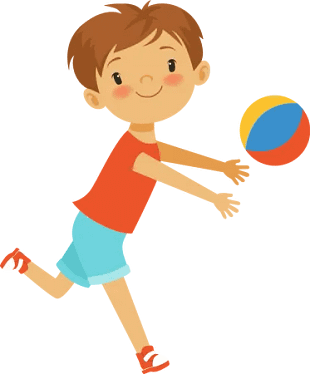
Social and Emotional Milestones:
- Enjoys trying new things.
- Engages in more creative pretend play.
- Struggles to differentiate between reality and make-believe.
- Plays more cooperatively with others, including parents.
- Expresses their interests.
Language and Communication Milestones:
- Tells stories and recites songs or rhymes (e.g., “Twinkle Twinkle Little Star”).
- Understands basic grammar rules, such as using “he” and “she” correctly.
- Can say the first and last name.
Cognitive Milestones (Learning, Thinking, Problem-Solving):
- Recognizes some colors and numbers.
- Understands the concept of counting.
- Begins to grasp the concept of time.
- Remembers parts of a story.
- Understands differences and similarities between objects.
- Draws a person with two to four body parts.
- Uses scissors.
- Starts copying some capital letters.
- Plays board games or other simple games.
- Predicts what might happen next in a book.
Physical Development Milestones:
- Can jump and stand on one foot for 2 seconds.
- Pours liquids from one container to another, cuts fruits, and mashes food with a spoon.
- Catches a ball most of the time.
How to Support Your Baby’s Development:
- Role-play with your child and let them take the lead.
- Act out possible future scenarios (e.g., going to school or staying overnight at a relative’s house).
- Allow your child to make choices about what to wear, play, or eat.
- Let your child solve problems with friends during play. Stay nearby to help if necessary, and encourage sharing and using words.
- Provide opportunities for imaginative play, such as playing with kitchen sets or building blocks.
- Use proper grammar when speaking to your child (e.g., say “I want you to come here,” not “I want ya to come here”).
- Use terms like “first,” “second,” and “last” when discussing daily activities to help your child understand sequence.
- Encourage your child to predict what happens next while reading books.
- Introduce games like “Simon Says” or counting games that involve movement and attention.
5 YEARS
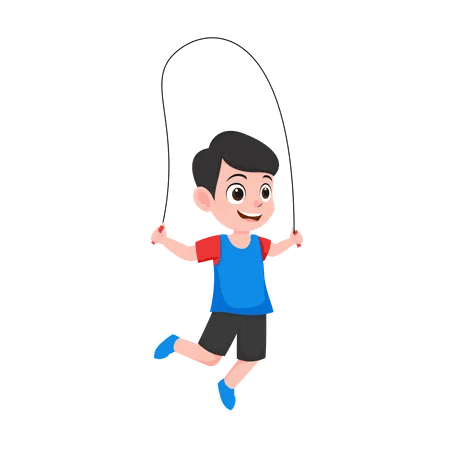
Social and Emotional Milestones:
- Finds joy in pleasing friends.
- Wants to be like friends.
- Shows an understanding of rules.
- Enjoys singing, dancing, and performing.
- Understands the difference between boys and girls.
- Can tell what is real and what is pretend.
- Shows more independence (e.g., can visit a neighbor under supervision).
- Alternates between being demanding and cooperative.
Language and Communication Milestones:
- Speaks very clearly.
- Tells simple stories using complete sentences.
- Uses the past tense correctly (e.g., “Grandma was here”).
- Can say their name and address.
Cognitive Milestones (Learning, Thinking, Problem-Solving):
- Counts 10 or more objects.
- Draws a person with at least six body parts.
- Copies triangles and other shapes.
- Writes some letters and numbers.
- Understands the everyday uses of objects like money and food.
Physical Development Milestones:
- Stands on one foot for 10 seconds or more.
- Hops and skips.
- Can eat with a spoon.
- Uses the toilet independently.
- Plays on swings and climbs trees.
How to Support Your Baby’s Development:
- Allow your child more independence when choosing activities, such as park outings or playing with friends.
- Encourage your child to solve problems on their own.
- If your child speaks back to you, don’t take it too seriously, but praise them when they speak politely.
- Now is a good time to discuss body safety and appropriate touching. Explain that only doctors, nurses, and parents should touch private areas.
- Teach your child their address and phone number.
- While reading stories, ask your child to predict what happens next.
- Encourage your child to engage with the pictures while reading.
- Introduce time concepts like “morning,” “afternoon,” and “evening,” as well as days of the week.
- Explore your child’s interests through community activities (e.g., visit the zoo if they love animals or the library if they enjoy books).
- Provide materials for creative projects like crayons, paint, scissors, and glue.
- Engage your child in matching games and encourage them to complete tasks. Teach them how to swing by pumping their legs.
- Help your child climb playground equipment.
- Go on walks together and help your child drive toy vehicles or search for hidden objects.





